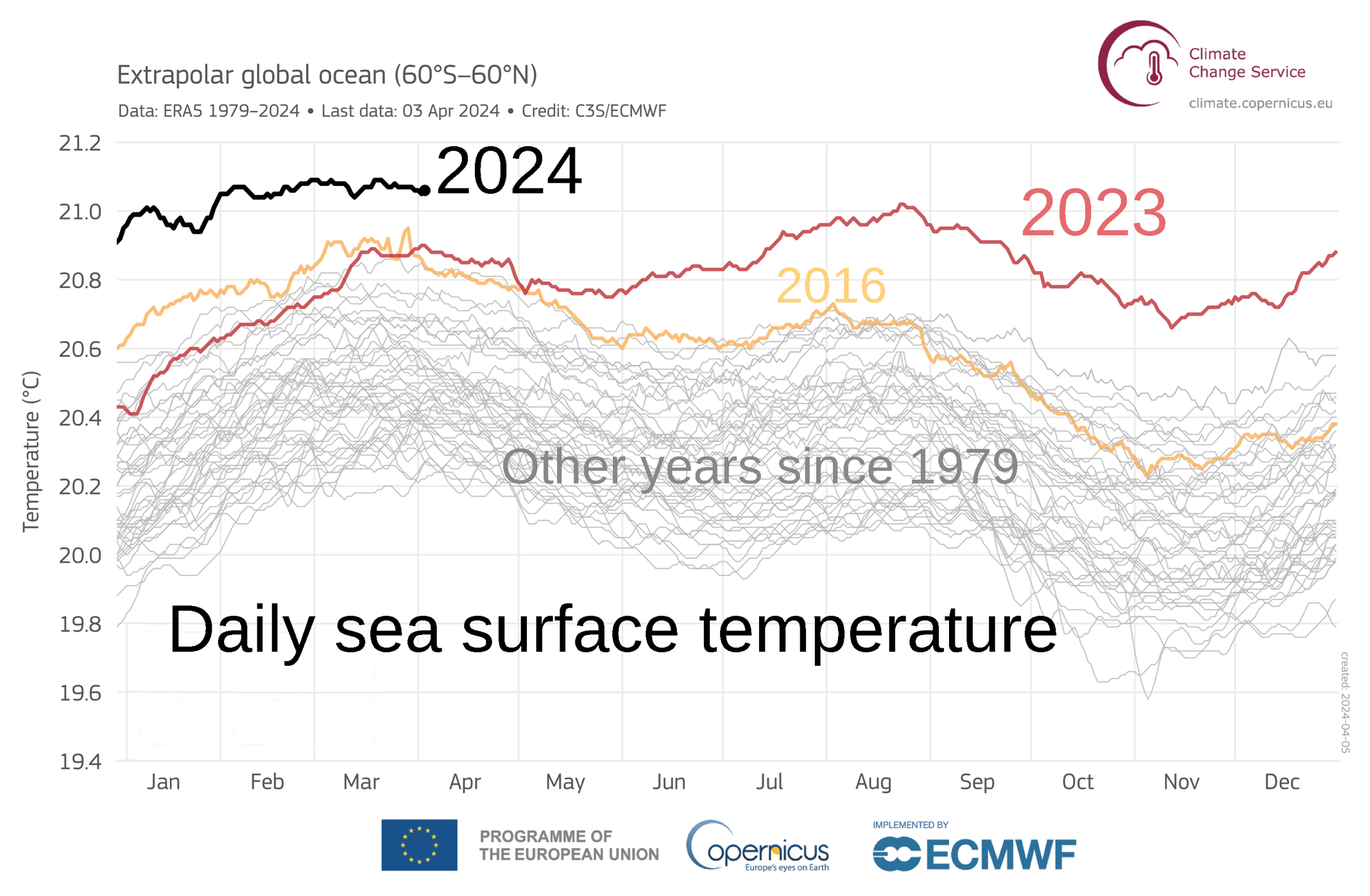Sea surface temperature
 |1979- Daily sea surface temperatures 60S-60N latitudes|thumb]]
|1979- Daily sea surface temperatures 60S-60N latitudes|thumb]]
File:ECCO2 Sea Surface Temperature and Flows.ogv
Sea Surface Temperature (SST) refers to the temperature of the water at the ocean's surface. SST is a critical factor in meteorology, oceanography, and climate science, as it influences weather patterns, marine ecosystems, and global climate systems. The measurement and monitoring of SST are essential for understanding and predicting changes in the Earth's climate, weather forecasting, and managing marine resources.
Measurement[edit | edit source]
SST can be measured using a variety of methods, including buoys, ships, satellites, and thermometers. Satellite measurements have become increasingly important for obtaining comprehensive global SST data. These satellites use infrared or microwave sensors to detect the temperature of the sea surface. However, each method has its limitations and accuracies, and thus, data from different sources are often combined to get a more accurate picture of global SST.
Importance[edit | edit source]
The importance of SST extends across several fields:
Climate Change[edit | edit source]
SST is a key indicator of climate change. Changes in SST can influence the global climate by affecting ocean currents, weather patterns, and the global energy balance. For example, an increase in SST can lead to more intense and frequent hurricanes and typhoons, as these storms draw their energy from warm ocean waters.
Marine Ecosystems[edit | edit source]
SST affects marine ecosystems by influencing the distribution and abundance of marine life. Many marine organisms are sensitive to changes in temperature, and even small changes in SST can impact the food chain, breeding patterns, and migration of marine species.
Weather Patterns[edit | edit source]
SST plays a crucial role in shaping weather patterns and climate phenomena such as El Niño and La Niña, which have significant impacts on global weather. Warm SSTs can lead to increased evaporation, which fuels tropical storms and rainfall patterns.
Changes and Trends[edit | edit source]
Observations have shown that SSTs have been increasing over the past few decades, a trend that is consistent with the overall warming of the Earth's climate. This increase in SST has been linked to global warming and is a concern for its potential impacts on weather extremes, sea level rise, and marine ecosystems.
Monitoring and Research[edit | edit source]
Continuous monitoring and research on SST are conducted by various international organizations and research institutions. This research is crucial for improving our understanding of the interactions between the ocean and the atmosphere, predicting future climate conditions, and developing strategies for mitigating and adapting to climate change.
Navigation: Wellness - Encyclopedia - Health topics - Disease Index - Drugs - World Directory - Gray's Anatomy - Keto diet - Recipes
Search WikiMD
Ad.Tired of being Overweight? Try W8MD's physician weight loss program.
Semaglutide (Ozempic / Wegovy and Tirzepatide (Mounjaro) available.
Advertise on WikiMD
WikiMD is not a substitute for professional medical advice. See full disclaimer.
Credits:Most images are courtesy of Wikimedia commons, and templates Wikipedia, licensed under CC BY SA or similar.
Contributors: Prab R. Tumpati, MD




